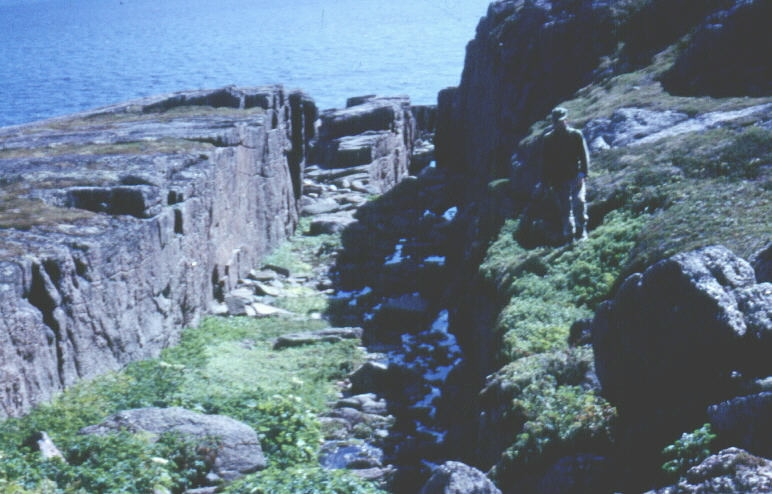
Dikes Near Coast

My field assistant, Terry Harlacher, stands next to a dike which has a thickness of about 15 feet. The waters of the Gulf of Saint Lawrence are in the background. The dike represents a melt which ascended along a vertical fracture at a time when the rocks that are now at the surface were at a great depth. The injection of this melted dike material forced the walls apart and the melt cooled within the fracture to form an igneous rock which has a different composition than the bedrock. The bedrock, having been intruded by the dike, is older than the dike. The bedrock itself is an igneous rock that cooled at great depth; the dike is much younger and probably cooled at a lesser depth. Subsequently, extended periods of uplift and erosion have brought both to the surface. Glaciation has removed any soil which may have formed, and weathering in the few thousand years since the melting of the glacier has removed more of the less-resistant dike material than the more-resistant syenite bedrock. Dike thicknesses vary considerably within the area, with some dikes having a thickness of less than one-inch. Dikes have different compositions and indicate that different source melts invaded at different times, with younger dikes cutting both the bedrock and older dikes. By studying the sequence of cross-cutting relationships among the dikes, the geological history of the region can be inferred.